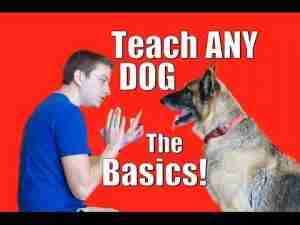What every dog owner needs to know about warning signs and bite inhibition
As a dog owner, your pooch’s safety and happiness is of utmost importance to you. You’ve probably heard about warning signs and bite inhibition but you’re not exactly sure what they mean, or how they help with keeping your fur baby safe.
Cue in a seasoned dog trainer who’s seen it all, and is willing to go the extra mile (and get a few bites) to demonstrate what you need to know.
This post is a must-read if you want to be confident when your pooch is interacting with other dogs or humans.
Understanding warning signs
Warning signs in dogs are behaviors that indicate that the dog is not comfortable with their environment or the situation they find themselves in. These warning tools help to prevent the escalation of a dog’s discomfort into biting behavior.
Some common warning signs to look out for include barking, growling, backing away, snarling, or showing their teeth. When you notice these signs, it is best to back off and give the dog some space until they are ready to come to you.
Bite inhibition basics
Bite inhibition refers to the extent to which a dog’s bite causes harm to the recipient of that bite. A well-socialized dog with proper bite inhibition has likely been taught to regulate the strength of their bite, even when they feel threatened or agitated.
This translates to a dog who is less likely to cause serious injury when they bite. The lesson here is that dogs need to learn early on that biting is only acceptable when they’re participating in a controlled social activity.
The demonstration
Now, let’s get to the fun part. To simulate the effectiveness of warning signs and bite inhibition, a dog trainer harnessed a friendly (but mouthy) pooch and proceeded to demonstrate what happens when either behavior is absent.
First, the trainer interacted with the dog with no warning signs and no bite inhibition. The dog bit down hard, causing pain and bruising.
Next, the trainer showed how warning signs and bite inhibition work together to prevent injury. This time, the dog bit down softly, with no lasting harm.
Best practices for training
It’s never too early to start training your dog on warning signs and bite inhibition. Start with rewarding them when they show the right behaviors and redirecting them when they demonstrate aggressive tendencies.
Socialize your pup early on with other dogs and humans to reinforce the social boundaries that they need to respect, e.g., not biting other dogs or owners.
The role of the dog owner
As a dog owner, you play a significant role in ensuring that your pooch is well-behaved and safe around other dogs and humans. Educate yourself on the warning signs of fear or aggression and work tirelessly to reinforce positive behavior in your pooch.
When in public, remember to keep your dog on a leash to help control their movement and interactions with other dogs and strangers.
warning signs and bite inhibition
Dogs can be affectionate and protective creatures, but it is also essential to remember that they can quickly turn aggressive if they feel threatened or uncomfortable. Teaching them warning signs and bite inhibition is key to preventing biting incidents that could lead to injury or legal problems. With proper training and consistent reinforcement of positive behavior, you can enjoy a lifetime of love-filled companionship with your furry friend.



Average Rating